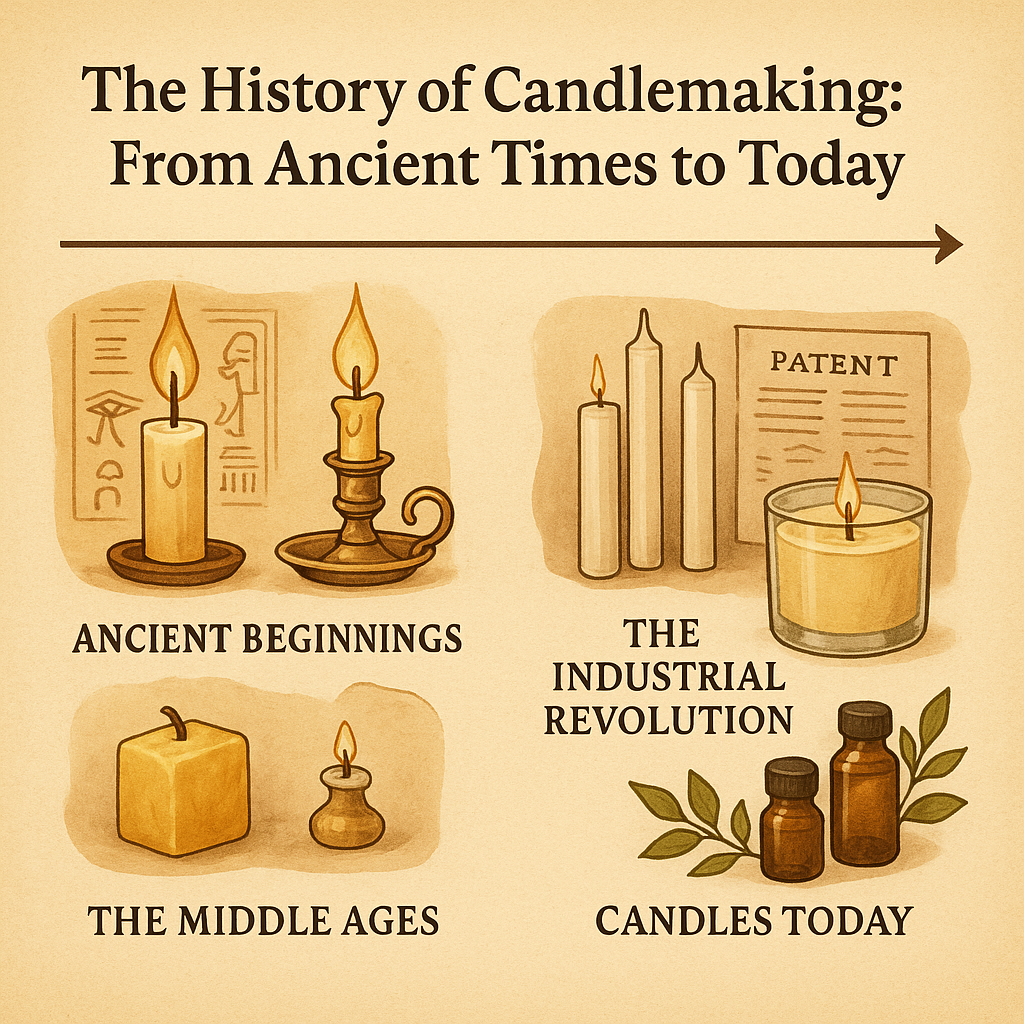Your cart is currently empty!

The History of Candlemaking: From Ancient Times to Today
Candles have lit our way through history — from ancient rituals to modern décor. But their story is much more fascinating than just wax and wick. Let’s journey through time and see how these small flames shaped cultures, homes, and traditions around the world.
Ancient Beginnings
Egyptians (circa 3000 BC)
Early Egyptians are often credited with one of the earliest forms of “candles.” They soaked the pithy core of reeds in melted animal fat (tallow) and used them as torches — though they didn’t yet have a true wick.
China (circa 200 BC)
In ancient China, candles were made from whale fat. They also innovated by using rolled rice paper as the wick — an early hint at modern candlemaking.
Rome (500 BC – 400 AD)
The Romans advanced the craft by developing a wicked candle — a wick encased in tallow or beeswax. Roman candles were used for religious ceremonies, home lighting, and even to assist travelers at night.
The Middle Ages: Wax and Worship
Beeswax candles rose to prominence in medieval Europe, especially within churches. Beeswax burned cleaner and with a more pleasant scent than smoky, foul-smelling tallow.
- Luxury Item: Only the wealthy and religious institutions could afford beeswax. Ordinary people continued using smoky tallow candles.
- Spiritual Symbolism: In Christianity, the candle’s flame became a symbol of Christ’s light — a tradition that still endures today.
The Industrial Revolution: Candlemaking Becomes a Business
1700s – 1800s: Major leaps in technology changed candlemaking:
- Spermaceti candles (made from whale oil) burned brighter and cleaner than earlier versions.
- Joseph Morgan’s Candle Mold (1834): Invented in England, it allowed mass production of candles. For the first time, candles became affordable for the average person.
- Stearin (discovered in the early 19th century): A byproduct of animal fats, stearin made candles harder, longer-lasting, and less odorous.
The Decline: Electricity Takes Over
By the late 1800s, the invention of the light bulb by Thomas Edison dramatically reduced the need for candles as a primary light source.
Candles transitioned from a necessity to a decorative or ceremonial item.
Candles Today: Art, Wellness, and Expression
Today, candles are less about survival and more about experience:
- Aromatherapy: Candles infused with essential oils promote relaxation and mental health.
- Decor and Atmosphere: Candles add warmth and intimacy to homes, events, and celebrations.
- Spiritual Practice: From birthday wishes to meditation sessions, candles continue to symbolize hope, intention, and inner peace.
- Eco-friendly innovations: Modern candlemakers now favor sustainable ingredients like soy wax, coconut wax, and ethically sourced beeswax.
Final Thoughts
From ancient torches to artisanal masterpieces, candles have evolved alongside humanity — lighting not just our homes, but our hearts and rituals.
The next time you light a candle, you’re participating in a tradition that stretches back over 5,000 years — a beautiful reminder that even the smallest flame can brighten the darkest times.
Leave a Reply